Ilang-Ilang Tree
- October 25, 2024
- 0 comment
The Ilang-Ilang tree, scientifically known as Cananga odorata, is a tropical tree renowned for its fragrant flowers and significant ecological role. Widely known for the essential oils derived from its blossoms, the Ilang-Ilang tree plays a crucial part in ecosystems by supporting local biodiversity, aiding in soil health, and providing shelter and food for wildlife.
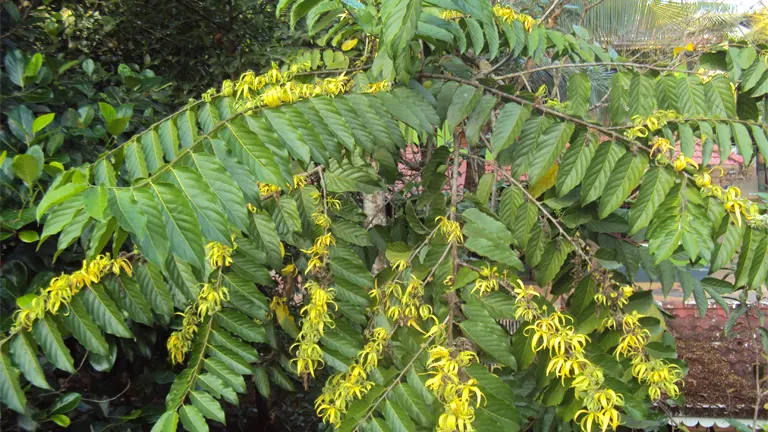
This tree is native to Southeast Asia and has become an important species in tropical regions, contributing to both ecological balance and the perfume industry. Its role in enhancing biodiversity and its adaptability to tropical climates make it an essential species for environmental stability.
What Is an Ilang-Ilang Tree?
The Ilang-Ilang tree (Cananga odorata) is a member of the Annonaceae family, which includes other flowering plants like the custard apple. This tree is best known for its bright yellow, star-shaped flowers that emit a powerful, sweet fragrance, commonly used in perfumes and aromatherapy. The tree can grow up to 40 meters tall, with long, smooth green leaves and a spreading canopy that provides ample shade. Its bark is greyish, and the tree has a relatively fast growth rate, thriving in well-drained soils and humid conditions.

One of the most interesting facts about the Ilang-Ilang tree is its contribution to soil health. It has deep roots that help to stabilize soil, preventing erosion in tropical environments. Furthermore, this tree is long-lived, typically surviving for several decades, and is adaptable to various tropical and subtropical environments.
| Characteristics | Description |
|---|---|
| Scientific Name | Cananga odorata |
| Habitat | Tropical lowland forests, often found in Southeast Asia, particularly in the Philippines, Malaysia, and Indonesia |
| Height & Growth | Can grow up to 40 meters tall with a wide-spreading crown, producing fragrant, star-shaped greenish-yellow flowers |
| Fragrance | Known for its strong, sweet fragrance, especially at night, which attracts pollinators like moths |
| Flowering Season | Blooms year-round, but peak flowering is typically during the warmer months |
| Ecological Role | Provides habitat and food for birds, insects, and other wildlife; important for forest ecosystem health |
| Economic Importance | Valued for its essential oil, which is used in perfumes, cosmetics, and traditional medicine |
| Medicinal Uses | Known in folk medicine for treating skin conditions, digestive problems, and stress relief |
| Cultural Significance | Frequently used in traditional ceremonies and rituals across Southeast Asia, symbolizing love and beauty |
| Threats | Deforestation, habitat destruction, and overharvesting for its fragrant flowers and oil production |
| Conservation Status | Although not endangered, it faces challenges from habitat loss and unsustainable farming practices |
| Biodiversity Support | Supports pollinators and other species in its ecosystem; its oil production also supports local economies |
Their rich, sweet fragrance intensifies at night, which attracts pollinators such as moths and bats. The essential oils derived from these flowers are highly valued for their use in luxury perfumes, aromatherapy, and even traditional medicine.
Ilang-Ilang Tree Species
The Ilang-Ilang tree comes in two main varieties, both classified under Cananga odorata:
- Cananga odorata var. macrophylla: This variety, known as “macrophylla,” is typically larger and produces oil of lesser quality but in higher quantities. It is often cultivated in tropical regions for its robust growth.
- Cananga odorata var. genuina: This variety produces the high-quality essential oil commonly used in the perfume industry. It tends to be smaller but more fragrant.
These varieties differ primarily in their flower production and oil quality. While the larger variety may be found in more humid environments with dense canopies, the smaller variety thrives in cultivated environments where its flowers are harvested for their valuable oils. Both species play essential roles in their respective ecosystems, helping to enrich the soil and providing shelter to local wildlife.
Uses of the Ilang-Ilang Tree
The primary commercial value of the Ilang-Ilang tree lies in its flowers, which are harvested for their essential oil. Ylang-Ylang oil is a key ingredient in many high-end perfumes, such as Chanel No. 5, and is also used in cosmetics and skincare products. Beyond the fragrance industry, the oil has medicinal properties and is used in traditional medicine to relieve stress, promote relaxation, and even treat minor wounds or skin irritations.

The flowers are often collected early in the morning when their fragrance is most potent. Steam distillation is used to extract the essential oil, which is graded into different qualities depending on the stage of distillation. The highest-grade oil, known as “Ylang-Ylang Extra,” is used in premium perfumes, while lower grades find their way into more affordable fragrances and industrial applications.
How to Grow and Care for Ilang-Ilang Tree
Growing an Ilang-Ilang tree at home can be a rewarding experience, particularly for those interested in gardening and fragrant plants. To successfully grow this tree, follow these key steps:

- Soil: Ilang-Ilang trees prefer well-drained, fertile soil. A mix of loam and sand with organic compost provides an ideal growing medium.
- Sunlight: These trees require full sun to partial shade. Ensure they receive at least six hours of sunlight daily.
- Watering: Keep the soil consistently moist but not waterlogged. While young, the tree needs regular watering, but mature trees can withstand short dry spells.
- Propagation: Ilang-Ilang trees can be propagated from seeds or cuttings. Seeds should be soaked in water for 24 hours before planting, while cuttings should be taken from healthy, mature trees for better success.
- Maintenance: Regular pruning helps shape the tree and promote healthy growth. Prune dead branches and trim the canopy to ensure proper air circulation. Protect young trees from pests like aphids and caterpillars using natural insecticides.
With proper care, Ilang-Ilang trees can grow quickly, reaching heights of up to 12 meters within a few years. These trees not only add beauty to a garden but also produce fragrant flowers that can be harvested for their essential oils.
Where Do Ilang-Ilang Trees Grow?
Ilang-Ilang trees are native to Southeast Asia, particularly in countries like the Philippines, Indonesia, and Malaysia. However, they have been cultivated in other tropical regions, including parts of India, Madagascar, and some Pacific Islands, due to their commercial value and adaptability.
These trees prefer warm, humid climates with ample rainfall and thrive in tropical lowland forests. They are well-suited to regions with high humidity and temperatures ranging from 21°C to 32°C. While they can tolerate different types of soil, they grow best in well-drained, loamy soil rich in organic matter.
In their natural habitat, Ilang-Ilang trees play a vital ecological role by stabilizing soil, reducing erosion, and providing food and shelter for various species of insects and birds. Their wide canopies offer shade, which helps moderate the local climate, and their flowers attract pollinators like bees, contributing to the local ecosystem’s overall health.
Is Ilang-Ilang Tree Drought-Tolerant?
While the Ilang-Ilang tree is well-adapted to tropical environments, it is not particularly drought-tolerant. It requires a consistent supply of moisture to grow and flower successfully. In regions where dry periods are common, regular irrigation is necessary to keep the tree healthy.
For gardeners in drier climates, the tree can be grown as long as it receives sufficient water, either through rainfall or manual watering. Adding mulch around the base of the tree can help retain soil moisture, and watering deeply once or twice a week can support its growth during dry spells.
4 Different Types Species of Ilang-Ilang Tree
Cananga Odorata Var. Genuine
The true Ylang-Ylang tree, grown for its essential oils.


Cananga Odorata var. Macrophylla
Grown for timber and lower-grade oil production.
Artabotrys Hexapetalus
Known as climbing Ylang-Ylang, it is related to the Ilang-Ilang and used in ornamental gardens.


Desmos Chinensis
Also related, this species is less known but is used in traditional medicines and ornamental purposes.
Ecological Benefits of Ilang-Ilang Tree
The Ilang-Ilang tree provides a range of ecological benefits, contributing to the overall health of the environment in which it grows. Its deep roots help prevent soil erosion by stabilizing the ground, particularly in areas prone to heavy rainfall. Additionally, the tree improves soil quality by dropping leaves and other organic matter, enriching the surrounding area.
Ilang-Ilang trees also play a crucial role in supporting biodiversity. They provide a habitat for various bird species, insects, and other wildlife. Their flowers are especially important for pollinators, including bees and butterflies, which rely on the nectar and fragrance to survive. By supporting these animals, the tree helps maintain a balanced ecosystem.
Ilang-Ilang Tree Flowering and Pollination
The Ilang-Ilang tree is famous for its aromatic yellow-green flowers, which typically bloom throughout the year in tropical climates. These flowers are shaped like delicate stars and have a strong, sweet scent that intensifies at night, attracting pollinators like moths and bees. The blooms are also used to extract essential oils, a major product of the tree.
Pollination of the Ilang-Ilang tree is carried out mainly by insects drawn to its fragrant flowers. This process ensures the production of fruits, which contain seeds that help propagate new trees. The continuous cycle of flowering and pollination makes the Ilang-Ilang tree a critical part of its local environment, supporting both flora and fauna.
Frequently Asked Questions (FAQs)
- Where does the Ilang-Ilang tree naturally grow?
The Ilang-Ilang tree is native to Southeast Asia, especially the Philippines, Indonesia, and Malaysia, but it is also cultivated in other tropical regions. - How is Ylang-Ylang essential oil made?
The oil is extracted from the flowers through steam distillation. The highest quality oil is collected in the first distillation phase and is called “Ylang-Ylang Extra.” - What are the main uses of Ilang-Ilang essential oil?
It is mainly used in perfumery, cosmetics, and aromatherapy for its sweet, floral fragrance. The oil also has calming and stress-relieving properties. - Can Ilang-Ilang trees grow outside tropical climates?
Ilang-Ilang trees require a hot, humid tropical climate to thrive and are not suited to colder regions. - How fast does the Ilang-Ilang tree grow?
It is a fast-growing tree and can reach heights of 12-20 meters within a few years, especially in its preferred tropical conditions. - Is the Ilang-Ilang tree endangered?
While the species is not officially endangered, wild populations are under threat due to habitat loss and overharvesting for its valuable essential oil.



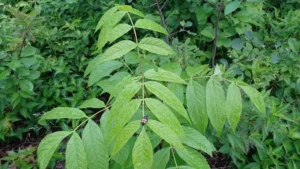
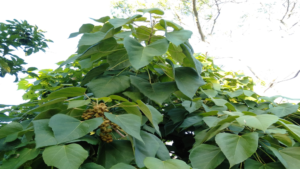

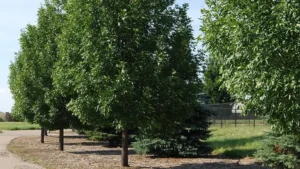

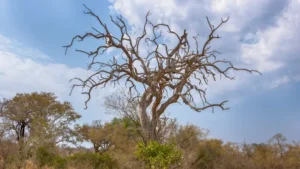
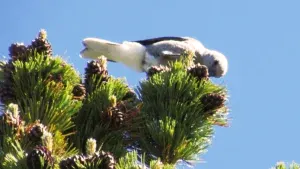
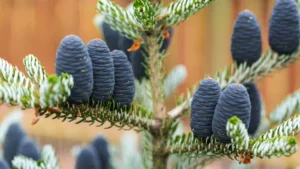
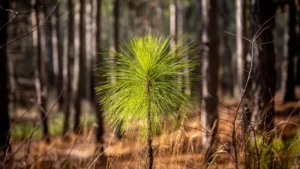

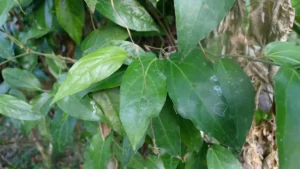
Leave your comment